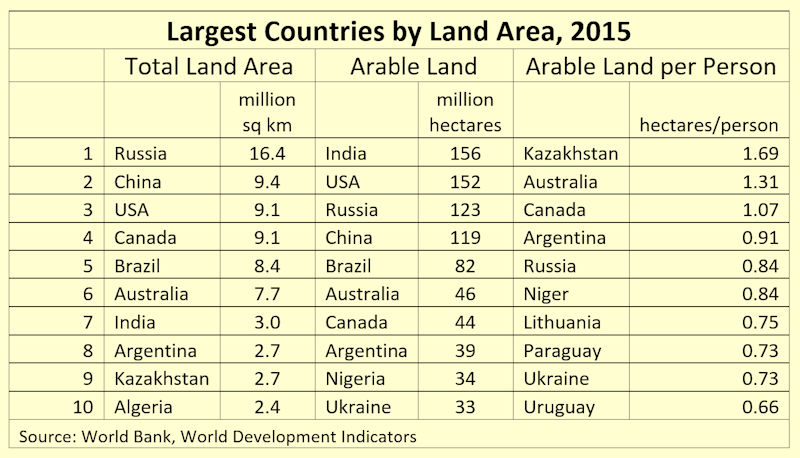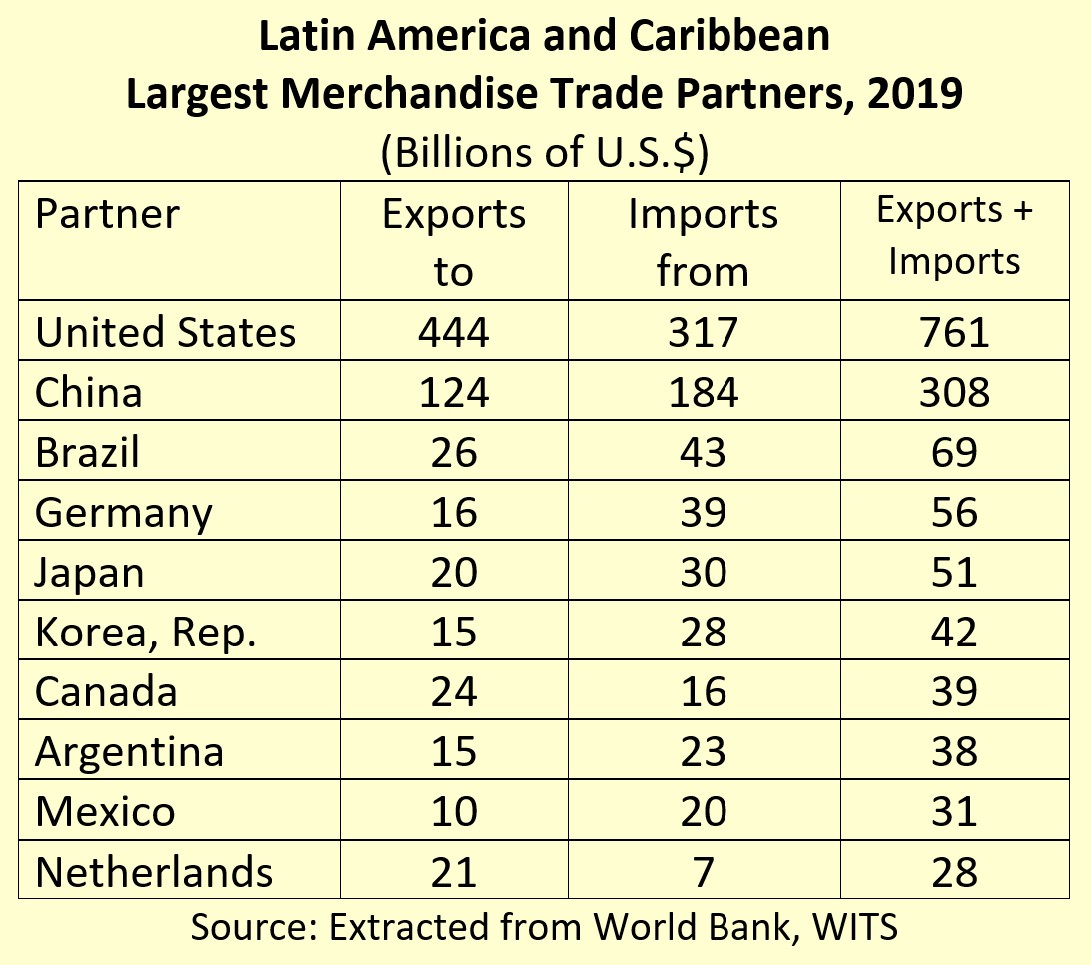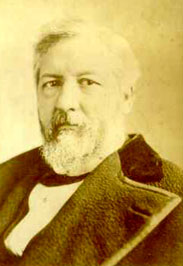|
The Western Hemisphere: I. Introduction: Environment (see map) New World: only 13 percent of the world's population, but has about 25 percent of its agricultural land. Nations of immigrants. Histories of colonialism.
 
II. Diversity and Community A. Region's share of world GDP (33% in 2018) is 2.5 times its share of world population (13%). B. Share of world exports is smaller than its share in world GDP. Large proportion of hemispheric trade is conducted within the United States. C. Dominance of United States: one-third of regional population, two-thirds of GDP, more than half of Latin American imports and three-quarters of Canadian imports. D. Diversity of Latin America: size, wealth, ideology. E. Common features 1. European Judeo-Christianity 2. Only four major languages. 3. Former colonies of England, Spain, France, Portugal. 4. All independent by 1824. Spirit of independence—national holidays, histories of protectionism. 5. Richard Haass observes that there's been little violent conflict in recent years between countries in the region, but considerable conflict within countries - periods of political instability, drug cartel violence, high murder rates, etc. 6. Cultures influenced by interactions of native Americans, Europeans, Africans. Slavery
Abolished 1804
– In Haiti, a successful rebellion ended slavery in 1793,
and Haiti formally abolished slavery when it declared
independence and in 1804. However, about 400,000 children
are still forced to work as domestic servants. 1819
- Canada 1822
- Ecuador 1823
– Chile 1824
– El Salvador, Guatemala, Honduras 1829
- Mexico 1831
– Bolivia 1834
- Belize 1842
- Uruguay 1848
- French Guiana 1851
– Colombia 1853
– Argentina 1854
– Peru and Venezuela 1863
- Suriname 1865
– United States 1873
– Puerto Rico 1886
– Cuba 1888
– Brazil III.
The United States: From A. 18th Century protectionist statements by John Adams, Thomas Jefferson, Alexander Hamilton, translated into trade barriers during 19th Century. B. Trade liberalization during early 20th Century (President Wilson) followed by extreme protectionism during Great Depression. C. Liberalization after 1934: Trade Agreements Act shifted authority to executive and provided for MFN clauses. IV.
Latin America: Liberalism to A. After colonialism, initial liberalization of trade, esp. with England. B. Reaction to "big stick" of Teddy Roosevelt, seizure of the Panama Canal Zone in 1904. Price instability during 1920s, export collapse during Great Depression. Adopted programs of import-substitution during the early 1930s. C. After WWII, import substitution industrialization (ISI ) advocated by Raul Prebisch and the UN Economic Commission for Latin America. Qualifications: 1. Moderate tariffs and limited periods of protection 2. ISI should be implemented on a regional basis. D. Beginning in 1970s, liberalizing factors: 1. Poor performance of ISI. 2. In 1973, General Pinochet and "Chicago Boys" in Chile. 3. Pressure from IMF, World Bank after debt crisis. V.
Economic Integration in the A.
Hemispheric Integration: Beginnings
2. Franklin D. Roosevelt renounced U.S. unilateral right of intervention in "good neighbor policy," but offset by Depression. B. Latin American Integration: The Troubled 1960s 1. From late 1930s to 1959--Latin American desire for intra-regional integration opposed by U.S. 2. Beginning in 1959, after Castro assumed power in Cuba, the U.S. supported common markets in Latin America with new Inter-American Development Bank. Early Latin efforts fell victim to political, military, and protectionist forces. C. The Alliance for Progress Launched by Kennedy in 1961, ambitious goals for 1961-1971: 1. Accelerate growth in every nation. 2. Raise living standards of the poor. 3. Eliminate adult illiteracy; primary education for all. 4. Increase life expectancy; cut child mortality. 5. Land and tax reform. 6. Political liberty/democracy. Some successes, important during 1962 Cuban missile crisis, but most goals were not fulfilled. D. ANCOM, CARICOM, and LAIA Beginning in mid-1960s, Latin American leaders started new programs of regional integration: 1.Caribbean Community and Common Market (CARICOM). 2.Andean common market (ANCOM) 3.Latin American Integration Association (LAIA). Again, limited success. E. The Baker and Brady Debt Plans 1.Debt crisis in August 1982, Mexico unable to meet obligations. Led to 28 debt reschedulings. 2.Baker Plan in 1985—reforming countries should have access to new lending from banks and official agencies. Supported by World Bank, not by commercial bank. 3.Brady Plan in 1989—reforming countries acquire long-term credit at low interest rates by issuing bonds with payment guaranteed by the IMF and the World Bank. F. Enterprise for the Americas Launched in 1990 by U.S. President George Bush, set goals for: 1. Hemispheric Free Trade, beginning with North America. 2. IDB loans for privatization, market-oriented investments. 3. Debt-for-nature swaps. Again, performance fell short of rhetoric, but improved cooperation. G. The Canada-U.S. Free Trade Agreement (CUFTA) Signed in 1988, was controversial in Canada. 1. Remove all remaining tariffs. 2. Reduce/eliminate non-tariff barriers in the energy, agricultural, and services. Successfully implemented. H. From CUFTA to NAFTA TO USMCA NAFTA presidential agreement in 1990, negotiations in 1991, preliminary agreement in 1992, ratified in 1993 (after U.S. elections and side agreements), and implementation began in 1994. 1. Tariffs. Eliminate all tariffs over five, ten, and fifteen years. 2. Rules of Origin. Generally, at least half the value of a qualified product must be derived from North American production. 3. Investment. Mexico liberalizes foreign investments within ten years, and allows free repatriation of profits. 4. Financial Services. U.S. and Canadian financial firms allowed to establish wholly owned subsidiaries in Mexico. 5. Transportation. U.S. truckers can carry freight in Mexico. 6. Dispute Settlement. North American Free Trade Commission, adjudicates broad disputes. 7. The Environment. Environmental Secretariat should provide advice, and NADBank should finance projects along the U.S.-Mexico border. 8. Labor Issues. Labor Council monitors compliance, resolves disputes, and promotes cooperation. Evaluation:
Arguments on both sides, but effect of NAFTA has been small
for the United States. In Mexico, our reading
by Kathleen Staudt suggests that NAFTA has boosted
inward investment and enlarged the middle class, and its
institutions have financed improvements in environmental
quality and health, and she acknowledges that the poverty rate
has dropped, but she believes that these benefits have been
outweighed by continued poor wages and working conditions.
It's hard to say whether this is attributable to NAFTA. 1. Labor and Environmental. Stronger requirements, including support for independent unions in Mexico and policies against “employment discrimination on the basis of sex, including with regard to pregnancy, sexual harassment, sexual orientation, gender identity, and caregiving responsibilities.” 2. Information Technology. Prohibition of localization requirements for data storage and that govern e-commerce. This strengthens international movement of data, but also raises concerns about data security. 3. Agriculture. The agreement reduces Canadian barriers to import of dairy products from the U.S. 4. Content Requirements for Automobiles and Parts. North American “regional value content” required was raised from 62.5% to 75% and 70% of the steel and aluminum used in auto production must come from North American sources. Third, 40% of the product value of autos and 45% of trucks must be made in facilities where workers are paid at least $16 per hour, which excludes many of the Mexican products which become subject to the NTR duti of 2.5%. 5. Intellectual Property Rights. Strengthening of IPR in many sectors, including 10-year patent protection for biologic pharmaceuticals 6. Non-Market Economies. The U.S. can withdraw from the agreement if Canada or Mexico signs a trade agreement with a non-market economy. I. Broader Latin American Integration 1. In 1991, leaders of Argentina, Brazil, Paraguay, and Uruguay agreed to create a Common Market of the South (MERCOSUR). Agreed to quickly remove barriers against movement of goods, capital, and people, coordinate macroeconomic policies, establish a common external tariff, and create institutions for policy review and dispute resolution. In December 2013, Venezuela also became a full member of MERCOSUR, but it was suspended in December 2016 for failure to follow rules of the organization. Now, recent tension between the left-leaning President of Argentina, Alberto Fernández, and the right-leaning President of Brazil, Jair Bolsonaro, have threatened the continued existence of Mercosur.
J. Free Trade Area for the Western Hemisphere (Americas) FTAA? November 1994 - 34 countries agreed in principle to negotiate FTAA no later than 2005. December 1994 - First Summit of the Americas in Miami, Florida April 1998 - Second Summit of the Americas in Santiago, Chile, formally launched negotiations for FTAA. Negotiating Groups established for 12 topics (market access, investment, intellectual property rights, etc.) April 2001 – 3rd Summit of the Americas, held in Quebec City with violent protests, was Pres. George W. Bush’s first summit meeting. Leaders reaffirmed the 2005 goal and approved an action plan. 9/11/2001 – Initial sympathy toward the U.S. in response to terrorist acts, but eventual opposition to the war in Iraq from Canada, Mexico, Brazil (socialist government), and many other countries in the region. Loss of momentum. June 2003 – Comprehensive trade Agreement signed between U.S. and Chile. 85 percent of qualifying goods traded between the two countries became duty free; remaining tariffs would be phased out over the next 12 years. Between 2003 and 2015, US exports to Chile grew 474%, and imports from Chile grew 140%. Still, Chile is only our 28th largest goods trading partner.
November 2003 – 8th FTAA Ministerial
|
||
